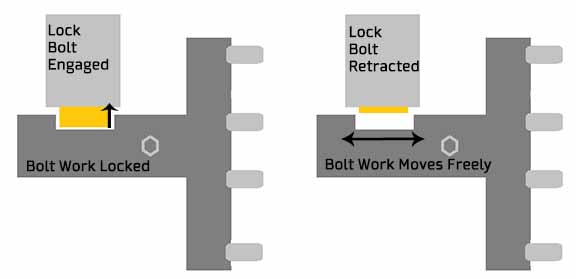There are a million and one things your store managers and personnel use throughout their shift. One of the most commonly used is the store safe. We trust our livelihoods to these metal boxes, but have you ever stopped to think about how they work? This YouTube video does a great job of covering the basics of how safes work.
Unfortunately, the video only covers the basics. One major compenent it doesn’t cover is how the lock works with the bolt work to open the door. When the correct combination is entered, the lock bolt disengages from the bolt work, allowing it to freely move as the handle is turned. When in a locked state, the lock bolt keeps the bolt work from moving.

Safes – The Mechanics
Many safes vary from the one shown in the video. Depending on the type of safe your facility uses, the internal components will vary. There are many additional security features that make safes increasingly difficult to penetrate including relockers, glass, and hardplate.
Relockers keep the safe from being opened if the primary lock is defeated. Often times, there are relockers built into the lock itself, and there can also be external relockers in the door. Many things can cause the relockers to fire including vandalism, improper installation and/or service, and failed opening attempts.
Another added security feature is having glass installed behind the front wall of the safe. If the safe is tampered with, the glass shatters, causing a multitude of relockers to fire.
Lastly, safes can have a variety of different types of hardplate. Hardplate is what makes safes extremely difficult to drill through. The hardplate in the video is made of concrete; however, it can be made of a variety of composites, including but not limited to metal and ball bearing. Often times, heavy duty safes will use a combination of different types of hardplate. For example, the first layer will be an extremely hard surface, which heats up the drill bit. Next, the drill hits a layer of brass, which melts and immediately hardens onto the drill bit, causing the bit to snap. The drill bit must be removed before proceeding onto the next layer of hardplate.
All of these security features combine to make safes secure and easily accessible only to the person who has the working code. Safes can be drill resistant, fire resistant, and/or torch resistant. The makeup of the safe is determined by the purpose(s) it needs to serve.
Do you know the security features of your safes? Do you know what kind your stores are using? Do you have questions about any of your safes? Let us know – we’d love to help work through your questions!
Google

One thought on “Safes – How Do They Work?”